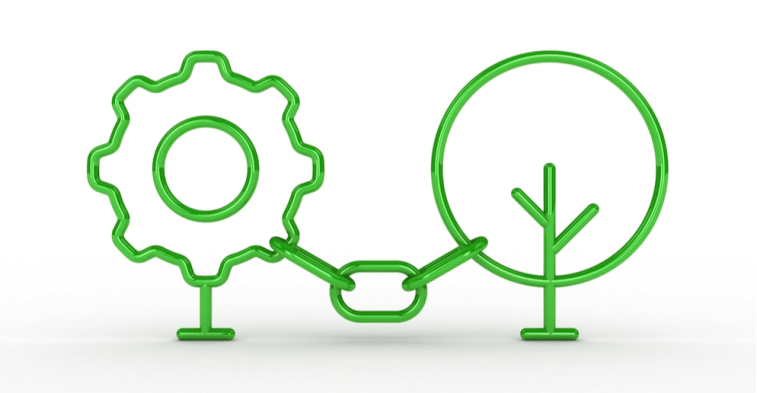10 Technologies That Promise a More Sustainable Supply Chain
Supply chains can often account for more than 90% of a company’s carbon footprint. Finding ways to reduce the carbon cost of moving goods and raw materials could help significantly cut down on the emissions businesses across the economy produce.
The growing demand for sustainable business practices has business leaders looking for ways to shrink company carbon footprints and environmental impacts.
Many new technologies from inside and outside the industry could soon transform the supply chain and help make it far more sustainable.
1. Biodegradable Packaging
Many packaging materials are not environmentally friendly. Plastics — often in materials like styrofoam — are common and can take thousands of years to break down. When they do, they can escape into the environment in the form of microplastics. These are microscopic plastic fragments that can cause a range of health problems in both wildlife and humans.
New sustainable packaging options made from materials like prawn shell chitin, agricultural waste, and beech tree pulp, provide the support that packages need and break down in normal environmental conditions, unlike plastic. The use of these materials can help reduce the long-term environmental impact that non-biodegradable packaging can have.
2. Electric Cars
Electric vehicles have the potential to transform logistics vehicle fleets and last-mile delivery. Already, these vehicles can help businesses sustainably handle last-mile delivery.
As EV infrastructure expands over the next few years, they’re likely to become even more practical, including for companies in rural areas, where EV infrastructure has traditionally been less robust.
3. E-Bikes
Decarbonizing last-mile delivery can be challenging. Electric vehicle fleets aren’t always practical, and the high cost of adopting all-new electric vehicles can be steep.
In dense cities, bike couriers can help reduce the carbon cost of last-mile delivery. E-bikes can significantly extend the range couriers can cover without generating carbon, while also speeding up deliveries completed by bike.
Because these bikes can be charged for as little as $0.50 in major cities, they can provide a valuable and cheap alternative to cars, mopeds, and similar transport options. If necessary, companies can retrofit e-bike batteries and motors onto existing company bikes, reducing the cost of adoption, as well.
While not a total replacement for fleet vehicles, e-bikes are a potential low-carbon delivery solution for logistics professionals in population-dense areas.
4. Hydrogen Aviation and Ship Fuel Cells
While battery technology is improving fast, it’s not practical in every case. Airplanes and cargo ships, for example, can’t support the size and weight of a battery needed to power the craft from port to port or airstrip to airstrip. Maritime and air shipping experts are trying to find a more sustainable fuel instead.
Pure hydrogen fuel produces no emissions when burned. Manufacturers can create it using a carbon-free production method, reversible electrolysis, that requires just electricity and water. Other viable methods include a solar production strategy that draws power from the sun and also produces no carbon emissions.
As these methods come into widespread use, it could become possible for logistics providers to stop using high-emissions fuels like aviation fuel and heavy fuel oil.
5. Electric and Hydrogen Semi-Trailer Trucks
Soon, semi-trucks powered by batteries and special hydrogen fuel cells may also help reshape how goods are moved worldwide.
Cutting-edge electric trucks have a range comparable to semi-trucks with conventional internal combustion engines, meaning the limited range of some EVs, which has slowed adoption in the past, may not always be a problem.
As electric vehicle infrastructure expands, it may quickly become practical for shippers to switch from conventional trucks to electric ones. This could significantly reduce one of the supply chain’s most significant sources of carbon emissions.
Hydrogen-fuel trucks offer similar benefits. Several hydrogen fuel stations for hydrogen trucks are already in the works in America and could soon provide the infrastructure needed to make hydrogen semi-trailers practical.
6. Demand Forecasting Algorithms
The pattern-finding abilities of AI make it an excellent tool for solving complex problems when vast amounts of data are available. With AI trained on sales data, for example, companies can create more accurate demand forecasts and build a better picture of what customers will want and when.
During times of market instability when future demand is particularly challenging to predict, these tools can help reduce supply-side waste and overproduction.
7. Driver Behavior Analysis
Modern telematics solutions can offer data that helps logistics companies significantly reduce the carbon impact of their fleet vehicles. For example, idling can have severe environmental impacts.
Devices monitoring driver behavior can detect whether a driver has left their vehicle idling and for how long. This system can reduce idling incidents, keep companies compliant with local anti-idling ordinances, and reduce the carbon impact of their fleet vehicles.
8. Route Optimization Algorithms
Other sustainable use-cases for telematics include route optimization tools that use live traffic data and can interface with business scheduling systems.
These tools optimize driver routes, ensuring vehicles are spending as little time as possible on the road. This technology can help reduce unnecessary driving, optimize scheduling, and cut down on company carbon emissions.
9. Blockchain
Blockchain, the digital ledger technology that powers cryptocurrencies, can significantly improve supply chain visibility and transparency.
The technology, which provides a reliable and difficult-to-manipulate digital record-generating tool, gives businesses the means they need to improve supply chain transparency and guarantee ethical sourcing practices.
With the secure, trustworthy transaction records stored on the blockchain, businesses have a better chance of knowing how goods supplied by third parties were sourced — and if sourcing was done sustainably or in a way that complements other shipping practices.
10. Exhaust Scrubbers
New technology also makes it easier to retrofit existing shipping equipment to reduce carbon emissions.
Exhaust scrubbers, for example, are becoming increasingly popular among cargo shippers. These scrubbers are used on cargo ships to reduce the sulfur emissions produced by heavy fuel oils and similar fuels. According to an estimate by Bloomberg NEF, 4,800 vessels could be equipped with these scrubbers by 2025.
How New Technology May Enable Supply Chain Sustainability
Because supply chains account for such a large share of business carbon emissions, logistics providers will play an essential role in the ongoing pivot to more sustainable business practices.
Advanced technology will likely be critical for supply chain managers wishing to make their operations more sustainable. Electric vehicles, e-bikes, hydrogen fuel, and bio-derived packaging could soon enable managers to reduce the environmental impact and carbon emissions of shipping.





Leave a Reply